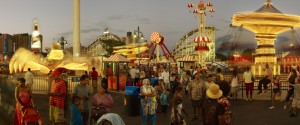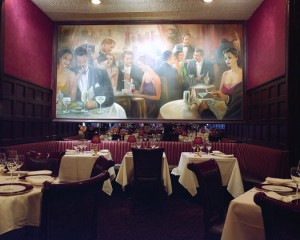Jessica Echevarria 8/30/12
Prof. Michaels
GRA 2330
Wijnanda Deroo- Seeing Photos
1. The photograph I chose to examine “Tenement, Orchard Street, 1988” is of an abandoned old Tenement on Orchard Street in New York City. It’s probably being photographed to then be restored and fixed and then rented. The walls and lighting are chipped and outdated. The space is also small as most original tenements were in the 1950s.
2. The photograph was probably trying to depict life during the Industrial Revolution when tenements were first built. They were small, cramped, and poorly built. Often time’s large numbered families lived in them. The picture shows cracks in the wall, chipping paint probably containing lead. There is one small window shining light into the entire small room. This is perfect picture of living in New York City tenement.
3. The photographer focused on the main corner of the room to fit in a view of the walls, window, lighting, and shelf. The floor isn’t what grabs your focus until the light shining from the window glares down on it. The walls are in bad conditions and the photographer wanted you to focus on that and the old light bulb fixture.
4. Wijnanda grabbed perfect focus of the room; it was enough for you to see it entirely. I can see all the walls, the doorway, the walls all in one angle. It made me realize how small the room was.
5. The photo is in low contrast mostly containing middle gray tones throughout the room. Every wall and the window create curved lines, and it’s implied that he is looking into the room. You can therefore see the photographers view from an expanded perspective. The perspective deep space allows you to see the distance between objects in the room.
6. The photographer reveals that the date on this photos shows that New York were not living in modernized tenements. Many of the tenements remained in the same poor conditions as before, and even the spaces remained small. I can see that this was more valued for its location then its living conditions.
7. This photo induces sorrow reminds me how some people of the past and today pay to live in poor condition in the city. Most apartments are outdated, but they are paying for the locations. Knowing information on how tenements were in the 1950s this photo is proof that many people lived like this even into the 1980s. The window seems to be the focus of probably the most beautiful view the city. The only thing that could make this tenement worth living in is probably seeing what was going on outside of it on the streets.
8. The photographer likes to delve into different spaces and in particular New York she explores work spaces, hotels, and living spaces. You can see that she even wants to experience how the people working and living in these places feels. Most are famous landmarks, cultural, religious, and family related environments. By looking deeper then the environment you can get a feel to the emotion of the people looking or living there experiences it. Wijnanda photographs these spaces to get an emotional feel and then convey it through photography. She is driven by old popular restaurants, and the industrial movement in our city as seen in her photos.






